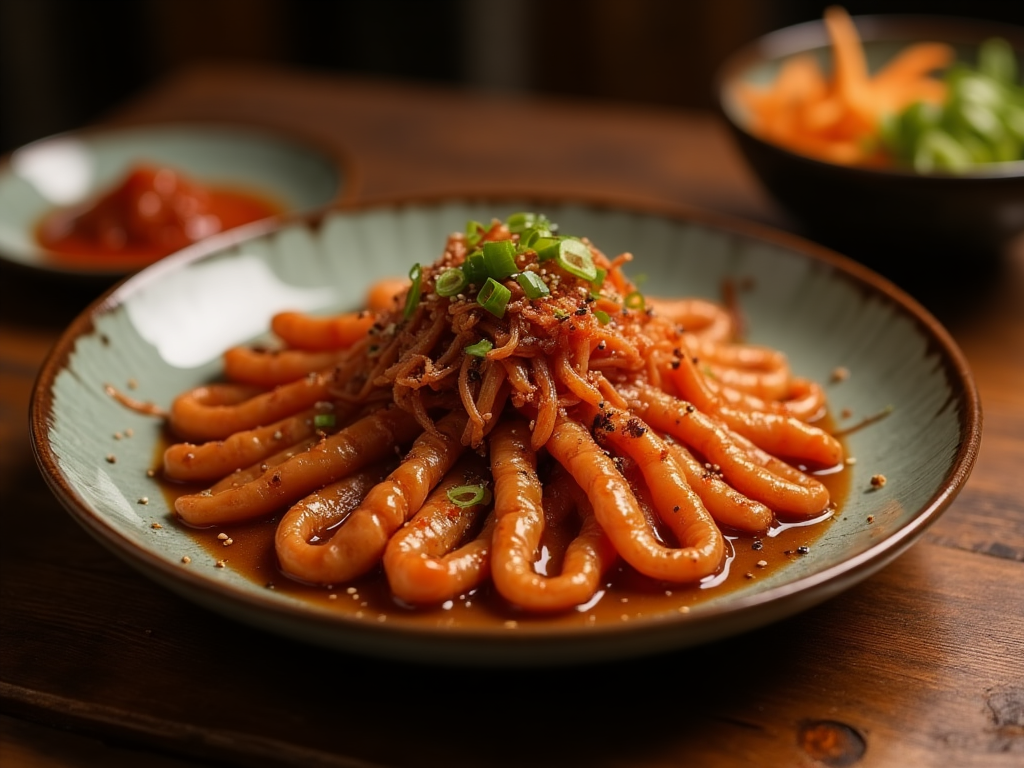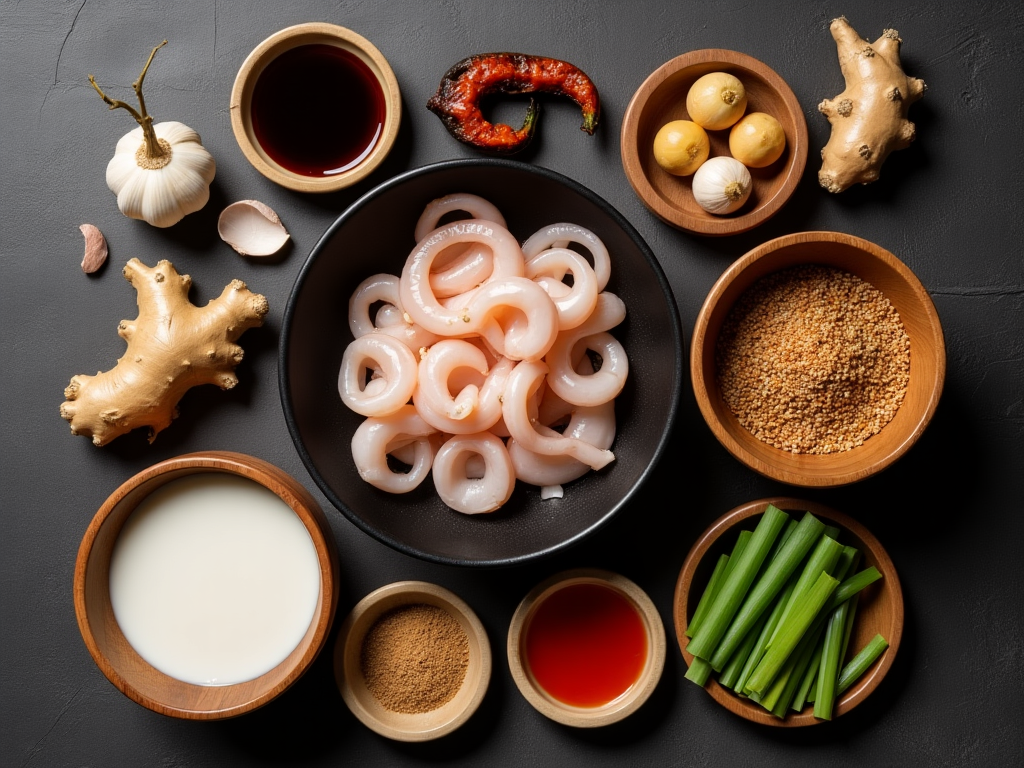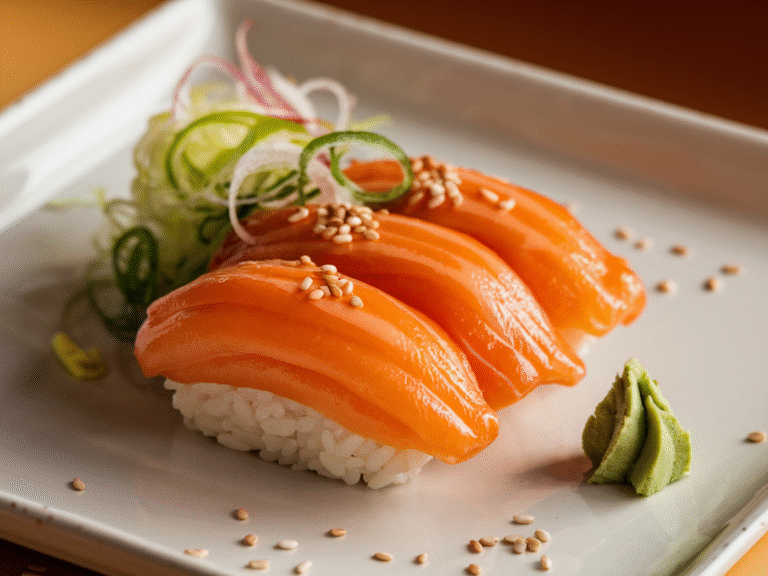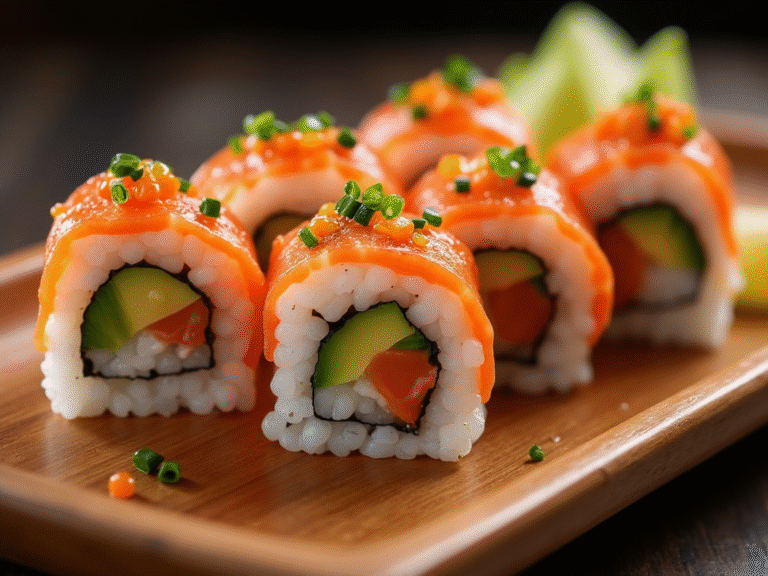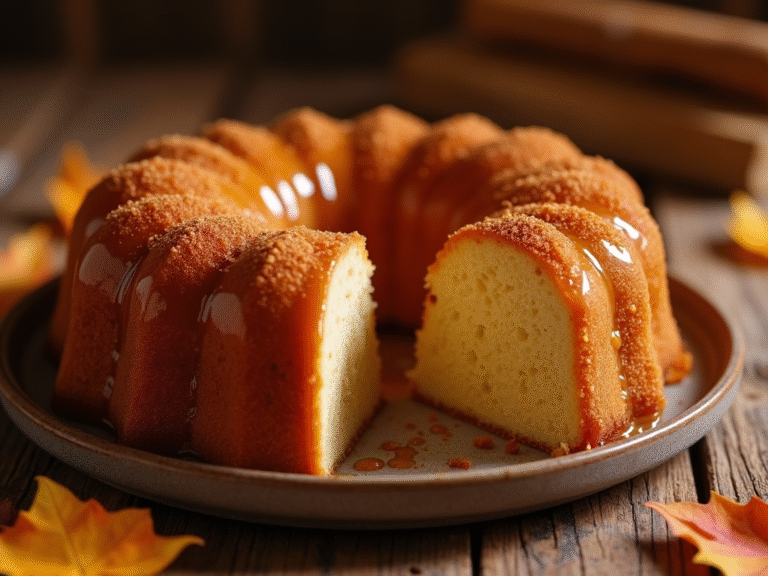Easy Ojingeo Bulgogi Recipe – Grilled Squid with Korean Spices
1. Introduction
If you’re looking to add some spice to your culinary routine, then Ojingeo Bulgogi is the dish for you. This Korean delicacy offers a perfect balance of savory, sweet, and spicy flavors, making it a delightful dish to enjoy with family or friends. Whether you’re a seasoned cook or a beginner, Ojingeo Bulgogi is easy to make and full of flavor, making it the perfect recipe to add to your weekly rotation.
What makes Ojingeo Bulgogi special? It’s the combination of tender squid, perfectly charred on the grill, and marinated in a savory-sweet sauce made with gochujang (Korean chili paste), soy sauce, sesame oil, and brown sugar. This dish is packed with umami, and the heat from the chili paste adds a unique zing that will have you coming back for more.
In this recipe, I’ll guide you through the process of making Ojingeo Bulgogi from start to finish. You’ll learn about each ingredient, the simple steps to make it, tips and variations, as well as the best ways to serve and store this amazing dish. It’s the perfect balance of flavor and ease, whether you’re cooking for a family dinner or entertaining guests.
2. Ingredients Breakdown
To make the most authentic Ojingeo Bulgogi, you’ll need a few key ingredients that come together beautifully. Here’s a breakdown of each one:
- Squid:
The star of this dish! Fresh squid provides a naturally sweet and delicate flavor. The texture of squid when grilled is tender yet slightly chewy, which adds depth to the dish. You can use whole squid, tentacles, or pre-sliced rings. If you can’t find fresh squid, frozen squid will work too, just ensure it’s properly thawed before use. - Soy Sauce:
Soy sauce adds that essential salty and umami-rich element to the marinade. You can opt for low-sodium soy sauce if you prefer a milder flavor. It acts as the base for the marinade and helps balance out the other ingredients. - Sesame Oil:
A small amount of sesame oil brings in a nutty, toasty flavor that is characteristic of many Korean dishes. It complements the soy sauce and gochujang, enhancing the depth of the marinade. - Garlic:
Garlic is a must in most Korean dishes and adds an aromatic, pungent kick. Fresh garlic, minced finely, infuses the marinade with its bold flavor. If you’re a garlic lover, feel free to add a bit more! - Ginger:
Fresh ginger gives this dish a bright, slightly spicy zing that balances out the richness of the squid and soy sauce. It’s a flavor enhancer that adds both freshness and warmth to the marinade. - Chili Paste (Gochujang):
Gochujang is a Korean chili paste that’s slightly sweet, smoky, and spicy. It gives the dish its signature heat and color. If you like it spicy, feel free to add extra gochujang, or you can adjust the amount based on your heat tolerance. - Brown Sugar:
Brown sugar helps balance out the salty and spicy flavors of the soy sauce and gochujang. It also gives the marinade a slight caramelization when grilled. You can substitute with honey or maple syrup for a different sweetness profile. - Green Onions:
Green onions (scallions) are used as both a garnish and a flavor enhancer. They provide a subtle, oniony bite and add a fresh, green element to the rich flavors of the squid. - Sesame Seeds:
Toasted sesame seeds add a delightful crunch and a nutty finish. They’re the perfect garnish to complete the dish and enhance the flavor profile.
3. Step-by-Step Instructions
Follow these easy steps to make Ojingeo Bulgogi:
- Prepare the Marinade
In a medium-sized mixing bowl, combine 3 tablespoons of soy sauce, 1 tablespoon of sesame oil, 2 minced garlic cloves, 1 tablespoon of grated ginger, 2 tablespoons of gochujang, and 1 tablespoon of brown sugar. Whisk the ingredients together until the sugar dissolves and the marinade is well-combined. - Clean and Slice the Squid
If you’re using whole squid, make sure to clean it properly. Remove the head and innards, and then cut the squid into rings or keep it whole if you prefer. If using tentacles, you can leave them intact. Once cleaned, slice the squid into bite-sized pieces or keep it in larger pieces, depending on your preference. - Marinate the Squid
Add the cleaned squid to the marinade, ensuring that each piece is well-coated. Cover the bowl and refrigerate for at least 30 minutes. For deeper flavor, marinate for up to 2 hours. The longer it marinates, the more the squid absorbs the flavors. - Heat the Grill or Pan
Preheat your grill or grill pan over medium-high heat. If you’re using a regular skillet, heat it to medium-high and add a small amount of sesame oil to prevent sticking. - Grill the Squid
Once your grill or pan is hot, add the squid. Grill for about 2-3 minutes on each side until the squid turns opaque and starts to curl. Keep a close eye on it; overcooking squid can make it tough and rubbery. - Garnish and Serve
Once cooked, transfer the squid to a serving plate. Sprinkle with chopped green onions and toasted sesame seeds for garnish. Serve immediately with steamed rice or a fresh salad on the side.
4. Tips and Variations
- Meat Swaps: If you prefer a different protein, swap squid for shrimp, scallops, or even chicken breast. Keep in mind that different proteins require different cooking times. Shrimp will cook faster, while chicken will need a few extra minutes.
- Make it Creamy: For a richer version, add 2 tablespoons of coconut milk to the marinade for a creamy, slightly sweet version of Ojingeo Bulgogi.
- Extra Veggies: Toss some bell peppers, zucchini, or mushrooms in with the squid while grilling for added crunch and flavor.
- Gluten-Free Option: Use tamari instead of regular soy sauce for a gluten-free alternative.
5. Serving Suggestions
Ojingeo Bulgogi is versatile and pairs beautifully with several side dishes:
- Steamed Rice: A simple bowl of white or brown rice is the perfect base for this flavorful squid dish.
- Fresh Salads: A light cucumber salad or an Asian-style slaw can offer a refreshing contrast to the spiciness of the Bulgogi.
- Stir-Fried Vegetables: Mix in some stir-fried vegetables like bok choy, carrots, or spinach to add color and texture to your meal.
Drink Pairings: A chilled glass of white wine, such as Sauvignon Blanc, complements the richness of the squid. Alternatively, go for iced green tea to refresh your palate.
6. Storage and Reheating Instructions
Storage:
Place leftover Ojingeo Bulgogi in an airtight container and store in the fridge for up to 2 days. If you’d like to keep it longer, freeze it in a freezer-safe container for up to 1 month.
Reheating:
To reheat, warm the squid in a skillet over medium heat for 3-4 minutes, stirring occasionally. If using the microwave, heat on medium for 1-2 minutes, but be cautious not to overcook the squid.
7. Recipe Notes
- Prep Ahead: This recipe is perfect for prepping ahead of time. Marinate the squid the night before, and just grill it when you’re ready to serve.
- Shredded Cheese Tip: For an extra twist, try adding some shredded mozzarella cheese to the squid before serving, although not traditionally Korean, it adds a creamy and cheesy dimension.
- Slow Cooker Option: If you prefer a slow-cooked version, add the marinated squid to a 6-quart slow cooker and cook on low for 2 hours.
8. Nutrition Information (Per Serving)
| Nutrient | Value |
|---|---|
| Calories | 220 kcal |
| Fat | 10g |
| Saturated Fat | 1.5g |
| Carbs | 14g |
| Sugar | 7g |
| Fiber | 2g |
| Protein | 18g |
| Sodium | 500mg |
| Cholesterol | 50mg |
| Calcium | 60mg |
| Iron | 2mg |
Nutrition information is an estimate and may vary based on specific ingredients used.
9. Recipe Card Summary
- Course: Main Course
- Cuisine: Korean
- Servings: 4
- Prep Time: 10 minutes
- Cook Time: 10 minutes
- Total Time: 30 minutes
Ingredients:
- 1 lb squid
- 3 tbsp soy sauce
- 1 tbsp sesame oil
- 2 garlic cloves, minced
- 1 tbsp ginger, grated
- 2 tbsp gochujang
- 1 tbsp brown sugar
- 2 green onions, chopped
- 1 tbsp sesame seeds
Instructions:
- Mix soy sauce, sesame oil, garlic, ginger, gochujang, and brown sugar to make marinade.
- Add squid to marinade and let it sit for 30 minutes.
- Grill squid on medium-high heat for 2-3 minutes per side.
- Garnish with green onions and sesame seeds.
Notes:
- Marinate overnight for better flavor.
- Best served with rice or a fresh salad.
10. Health Benefits Section
The health benefits of this dish are plenty. The squid offers high-quality protein and omega-3 fatty acids, essential for heart health. Garlic provides antioxidants, and sesame oil contains beneficial fats. Gochujang is believed to boost metabolism, making this dish not only tasty but also beneficial for overall health.
11. Mistakes to Avoid During the Process
- Don’t overcook the squid. This will make it tough and rubbery.
- Be mindful of the grill or pan temperature; cooking too quickly can burn the marinade.
- Don’t skip marinating — it’s essential for flavor development.
- Make sure the squid is fully thawed if using frozen; excess water can dilute the flavor.
- Don’t forget to let the marinade dissolve fully to avoid uneven seasoning.
12. High-Quality FAQs
- Can I use frozen squid for this recipe?
Yes, make sure it’s properly thawed and drained before use. - Can I make this recipe spicier?
Absolutely! Add more gochujang or chili flakes to adjust the heat. - What can I serve with Ojingeo Bulgogi?
Steamed rice, fresh salads, or stir-fried vegetables work great. - Can I substitute squid with another protein?
Yes, shrimp, scallops, or chicken will work as substitutes. - How long should I marinate the squid?
Marinate for at least 30 minutes; however, marinating for 2 hours will intensify the flavor. - Can I prepare this dish ahead of time?
Yes, you can marinate the squid ahead of time for easier preparation when you’re ready to cook.
13. Final Thoughts or Conclusion
Whether you’re feeding a crowd or craving comfort food, Ojingeo Bulgogi is a dish that’s sure to satisfy. Its unique blend of sweet, spicy, and savory flavors makes it a standout meal that’s perfect for any occasion. Let me know how your version turns out in the comments below — I can’t wait to hear what you think!

